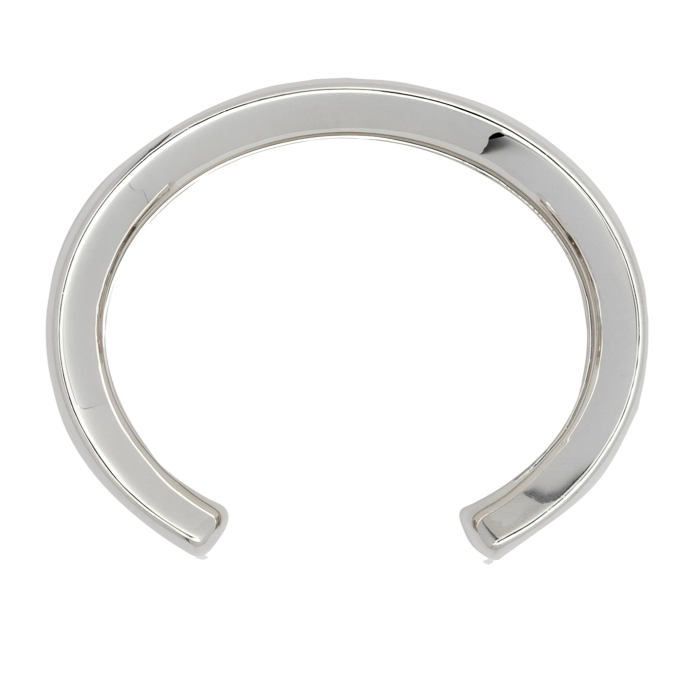Royal Mint strikes out with a lifestyle jewellery brand

Roula Khalaf, Editor of the FT, selects her favourite stories in this weekly newsletter.
Gordon Summers has been creating what he calls the “most widespread pieces of artwork” for the past 30 years. But it is now — as he is finally getting into the jewellery business — that he feels his craftsmanship will gain recognition.
As chief engraver at The Royal Mint, he is helping upskill its workforce to use their traditional coin and medal-making techniques to create fine jewellery and homewares — which the UK government-owned organisation will sell under its new lifestyle brand, ‘886’ (the year the mint first produced coins).
“There are billions of coins in circulation, but people tend not to look at them very closely,” says Summers, who trained as a jeweller before joining the mint. “The jewellery is going to be rarer, but it’s also going to get much more focus. When people buy a piece of jewellery like that, they want to show it off . . . people will actually start looking at what we’ve produced.”
Launching this spring, the debut 886 collection will feature 28 unisex jewellery designs, including hoop and stud earrings, T-bar chain necklaces, band and signet rings, and cuffs, plus stationery made in collaboration with UK brands Makers Cabinet and Yard O Led.
The 886 brand is part of a wider reinvention strategy for the mint, based in Llantrisant, south Wales, to manage the impact of declining cash use. It issued 437mn coins into UK circulation in 2020-21, less than a third of the 1.35bn issued in 2016-17. Meanwhile, it delivered 1.72bn coins and blanks to 22 countries in 2020-21, compared with 3bn to 23 countries in the previous financial year. The currency division recorded an adjusted operating loss of £1.4mn in 2020-21.
Sean Millard joined The Royal Mint as chief growth officer in May 2020 to help create new revenue streams and transfer the skills of its 802 staff. He says the organisation, which produced a trial range of jewellery in 2019, has set “quite ambitious [financial] targets” for 886, although he declines to give figures.

“This isn’t a pet project,” he says. “It’s a genuine desire to play a significant part in this market, but an even more genuine desire to play the role that we’ve set out for this business, which is to diversify revenues and create jobs. And, unless we are a big player, we will not achieve those objectives.”
The new division will employ 21 people on a full-time basis in 2022, rising to 100-120 by its fifth year. After appointing a trainer later this year to develop a syllabus, it will launch a one-year training programme in jewellery manufacturing skills and the mint’s production methods, with the aim of taking on four people from outside the business in the first year and a further 10 in the second. It will also upskill existing staff — particularly coin and medal makers.
About 70 per cent of the new brand’s production is currently in-house, but the ambition is to grow that to 75 per cent next year. Millard says that, as the mint increases its capability, it would “like to be able to support others in the market” with their production. He points to the advantages of provenance and sustainability for UK brands manufacturing close to home — qualities that he says are increasingly important to consumers.

“886 is really all about our focus . . . to develop British craftsmanship,” says Anne Jessopp, Royal Mint chief executive. She says the mint wants to bring jewellery-making skills back to the UK and will be working with other British companies to share best practice on cost-effective manufacturing.
Jessopp says the mint’s approach to expanding production will be a mix of “making sure people in the market know we’re there” by supporting the wider jewellery industry through award or apprenticeship schemes, for example, and “proactively going out and talking to organisations”.
All gold jewellery produced in Llantrisant for 886 will be made from electronic-waste gold. In what Jessopp says is a “world first”, the mint has signed a licence agreement with Canadian start-up Excir to use its chemical technology to recover precious metals from circuit boards of discarded mobile phones and laptops. The plant will be able to process 60 tonnes of electronic waste per week in 2023 and produce 550kg of recovered gold per year. Jessopp says the mint will sell any recovered gold that is surplus to its own needs.


The first line for 886 references an inverted institutional gold bullion bar. Designed by the brand’s creative director, Dominic Jones, who previously worked for UK jewellers Links of London and Astley Clarke, it explores the idea of jewellery as a “wearable asset”, with the gramme weight of the metal displayed alongside the hallmark.
Jones says he wanted the jewellery to be “visually uncomplicated”, to provide space to talk about the “idiosyncrasies” of the mint’s production process. Rather than being cast, the solid gold and silver pieces are struck like coins by squeezing the metal, a process, the mint says, that makes it denser and 30 per cent stronger.
The mint’s proprietary caustics technique, usually a security feature, is being used to form the surface of some jewellery pieces so that when they catch the light, they cast a Batman-like projection to reveal a hidden image.
“In design, [the jewellery] is very simple but, in execution, it’s quite complicated, so it’s a really good case study to start with. If we can get this perfect and build out from it, everything is going to be really strong,” says Jones.
Comments